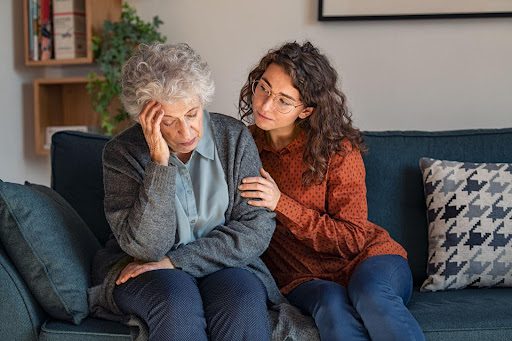Obsessive-Compulsive Disorder (OCD) is a chronic and disabling condition affecting an estimated 1% of men, 1.5% of women, and 1-3% of children and adolescents worldwide. Individuals with OCD endure constant intrusion of unwanted obsessive thoughts and urges that cause significant distress and anxiety. They cope with these disturbing thoughts and images by compulsively performing repetitive, ritualistic behaviors, hoping to reduce anxiety or prevent a dreaded outcome related to the obsessions. The compulsive behaviors associated with this disorder can become time-consuming and disruptive to daily activities, such as work and social interaction.

Because OCD is a chronic disorder, treatment is designed to help individuals live with and manage symptoms as they wax and wane throughout their life. OCD symptoms can present in ways unique to specific age groups, which may be meaningful when adjusting treatments and symptom management strategies.
Read on to learn how OCD can present across different age groups and what age groups OCD affects the most at the onset. Then learn about treatment options and considerations for individuals of all ages.
While many symptoms are common among individuals of all ages with OCD, age and development can influence how individuals perceive and experience the disorder.
While OCD can develop at any age, the age groups OCD affects the most at onset are childhood and adolescence. OCD is considered early-onset when symptoms start showing at about age ten, with late-onset symptoms emerging at approximately age 23.
One study examined the differences in symptomology and antidepressant response among adults with either early- or late-onset OCD. Onset at a younger age is linked with poor insight, which is frequently associated with worse outcomes. These individuals also had a higher incidence of personality disorders, which are chronic disruptive patterns of thoughts, feelings, and behavior that cause problems with functioning and relationships. Despite these differences in clinical features, individuals with early- and late-onset in this study had similar responses to antidepressant medications.
While overall severity and functional impairment do not seem to differ between children and adolescents with OCD, the disorder can present differently for younger and older youth.
Younger children have poorer insight, likely due to their earlier stage of development. Also, children have different patterns of conditions that occur together, also known as co-occurring disorders. Attention deficit hyperactivity disorder (ADHD) and disruptive disorders, such as oppositional defiant disorder (ODD) and conduct disorder (CD) are more prevalent among younger children than adolescents.
Parents of younger and older children report similar levels of impairment from OCD, but the youth themselves have different insights on their symptoms. Adolescents report more functional impairment than younger children, meaning that their condition limits their ability to perform typical daily activities. This difference may be explained by younger children underreporting their symptoms because of their poorer insight. Adolescents also report more mental compulsions than younger children, which may reflect the comparatively greater complexity of adolescence.
OCD onset often occurs in childhood and adolescents, but early adulthood is another peak time for OCD to emerge. Symptoms in adults are similar to those in childhood and adolescence, though with maturity and older age, adults may have a better understanding and insight regarding their condition. They may understand that their thoughts, emotions, and behavioral patterns are not normal, a realization that may both aid their recognition of symptoms and create additional distress.
Unfortunately, research studies have focused little on individuals over the age of 65 with OCD. One study that did include older adults took a revealing look at the prevalence of OCD symptom patterns across a population of individuals ranging from age 15 to over 70 years old. As expected, the greatest number of individuals affected with the worst symptoms were the youngest, from age 15 through the late 20s. Prevalence and symptom severity trended down as age increased, leveling off in the 30s through middle age.
With a broader look at the lifespan, this study shed new light on OCD symptomatology in older adults. It was previously thought that symptoms were worse for younger individuals, and severity improved with age. This remained true for most individuals aged 65 and younger. Above age 65, symptoms worsened, and checking behaviors increased sharply. One possible reason for increased checking behavior is that it compensates for age-related cognitive decline rather than OCD symptomatology. However, this finding was unexpected and contrary to previous studies, warranting deeper exploration in future studies.
While a small number of individuals may need inpatient care for OCD symptoms, families can often arrange for treatment in their local areas through outpatient clinics. Treatment planning should consider and address the most distressing symptoms first, particularly those from co-occurring disorders, such as suicidality from depression, acute medical illness, or trauma. After these are stabilized, individuals can prioritize treating disruptive OCD symptoms.
First-line treatments for OCD in all age groups include psychoeducation and several types of psychotherapy, with medication as warranted for more severe cases. Magnetic stimulation therapy is also approved and effective for the treatment of OCD in adults.
Psychoeducation occurs when a clinician or primary provider shares information about disorders along with appropriate coping strategies. Individuals and their families learn about the condition and how this knowledge applies to their situation. While psychoeducation is recommended for any disorder, it is critical for OCD due to its chronic nature. Attitude change is an important goal for family members and loved ones as they learn to support the individual with OCD. Addressing OCD as a family unit is critical for children and adolescents. Youth with OCD have likely experienced social isolation and disrupted family relationships due to their symptoms, especially before their symptoms were diagnosed and explained.
Exposure and Response Prevention (ERP) is an evidence-based cognitive-behavioral therapy shown to be effective across all age groups. In ERP, an individual learns about their condition, confronts fears surrounding their obsessive thoughts, and resists performing compulsive behaviors in response. Through in-person and imagined scenarios, individuals are gradually exposed to feared stimuli, helping them understand that these stimuli are not harmful. Individuals also learn to cope with the distress in ways that are not disruptive.
Family cognitive behavioral therapy (FCBT) is a treatment approach that may be especially valuable for children with OCD. A child’s symptoms are viewed and treated within the context of family dynamics rather than focusing on the individual. This effective treatment strategy can be further improved when family treatment is tailored to the specific clinical needs of the child.
Selective serotonin reuptake inhibitor (SSRI) antidepressants have shown to be effective at reducing OCD symptoms in all age groups and may be recommended for moderate to severe cases. Efficacy for several SSRIs are similar, but fluoxetine and sertraline are recommended most frequently due to their strong safety profile. Fluvoxamine and paroxetine are also effective but have more adverse effects. Clomipramine is not as well tolerated and has a more complex set of adverse effects, such as its impact on cardiac health. It is not recommended for children, but adults with severe symptoms may find it effective when combined with SSRIs.
Transcranial Magnetic Stimulation (TMS) is an evidence-based, FDA-cleared treatment that safely and effectively reduces symptoms of OCD in adults. Magnetic pulses are delivered through either a Figure-8 coil design (First-Generation TMS) or a coil embedded in a cushioned helmet (Deep TMS™), targeting brain regions associated with OCD symptoms. A full course of OCD treatment consists of several treatments over a period of six weeks, with sessions including brief exposure to stimuli related to the individual’s obsessions followed by 18 minutes of magnetic stimulation. TMS may cause a brief mild headache at the stimulation site, but treatment is well-tolerated and causes no long-term adverse effects.
Individuals with OCD manage their symptoms across a lifetime, and many factors can affect the ebb and flow of symptom severity. Understanding these differences can help individuals anticipate and respond to symptoms as they age. With many treatment options available, individuals of all ages can find ways to reduce the impact of OCD symptoms and improve their quality of life.